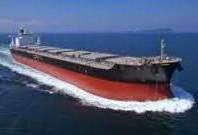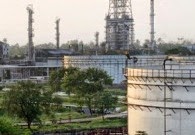North Dakota, which became just the fourth state to record oil production above 1 MMbopd, could see even stronger growth over the summer as improved weather makes life easier for drilling crews.
Output increased to 1,001,149 barrels a day in April, the state’s Department of Mineral Resources reported yesterday. Texas, California and Alaska have crossed the million-barrel mark. Only Texas remains above the state, at almost 3 MMbopd.
April oilfield work was hampered by heavy rain that shut roads and strong winds that closed down operations. Crews completed 200 wells during the month, and another 600 are already drilled and just waiting on hydraulic fracturing, or fracking. Better weather in the summer months should allow more new wells to start gushing oil.
“As the weather improves, operators should have full utilization of all their rigs, and possibly additional completion crews to whittle down the backlog,” Jonathan Garrett, an upstream analyst at Wood Mackenzie Ltd. in Houston, said in a phone interview today. “I wouldn’t be surprised to see quite a bit of production growth over the summer. It should be pretty impressive.”
Oil and gas from the Bakken and other shale formations helped the U.S. produce the equivalent of 87% of its energy needs in 2013, the highest level since 1985, according to data from the Energy Information Administration. The U.S. imported 7.7 MMbopd in 2013, the least since 1996.
Hydrocarbon-Rich
Most oil produced in North Dakota comes from the Bakken and Three Forks shale formations, layers of hydrocarbon-rich rock more than a mile beneath the Earth’s surface. High crude prices and improvements in drilling technology have helped companies like Continental Resources and Whiting Petroleum tap into the previously inaccessible shale.
Output from shale wells declines by 60% to 70% in the first year, according to Austin, Texas-based Drillinginfo Inc., faster than traditional wells. Because of the steep decline rate, companies need to finish new wells constantly. Bad weather can slow the completion process, curbing production growth.
Adverse Weather
In April, roads were shut for three days because of heavy rain, and there were nine to 11 days of wind blowing faster than 35 mph, too strong for completion work, Lynn Helms, the director of the state’s Department of Mineral Resources, said during a conference call with reporters yesterday. The weather in May and June has been much more benign.
“Permitting and drilling activity indicates that we’ll continue to see production grow and build well above 1 MMbopd,” he said.
Producers are also drilling better wells, Garrett said. They’re increasing horsepower and using more water and sand in the fracking process, which is helping to increase initial production and slow decline rates.
Bakken crude priced at Enbridge Inc.’s pipeline hub at Clearbrook, Minnesota, traded at a discount of $6.50 less than West Texas Intermediate in Cushing, Oklahoma, at 8:59 a.m. New York time, according to data compiled by Bloomberg.
About 30% of North Dakota’s oil left the state by pipeline and 63% by rail in April, according to the state’s pipeline authority. It’s the lowest percentage of rail transportation since September.
It costs $9 to $10 a barrel to transport oil by train to East Coast refineries, and $6 to $7 a barrel to rail crude to Washington plants, Tesoro Corp. said in a February presentation to investors.
The discount of Bakken crude priced at the wellhead to Brent crude, the benchmark for global waterborne crude, is about $20.71 a barrel, according to data compiled by Bloomberg.
Providing useful resources, articles and writings on crude oil, other petroleum products, energy and gas. By Mega Billion Corporation BLCO seller, Nigeria, online.

 Mega Billion Corporation Limited is a leader in the of Nigerian Bonny Light Crude Oil (BLCO) sales market. As a privately held company, Mega Billion Corp. Nigeria Ltd is committed to and is focused on delivering reliable services to all her clients.
Mega Billion Corporation Limited is a leader in the of Nigerian Bonny Light Crude Oil (BLCO) sales market. As a privately held company, Mega Billion Corp. Nigeria Ltd is committed to and is focused on delivering reliable services to all her clients.  Mega Billion Corporation Nigeria Limited has an excellent track record of reliability in the supply of Bonny light crude oil, BLCO. We protect our buyers with 2% Performance Bond while we also expect protection from our customers with bank instrument from the world's top banks. We deliver on TTO, TTT, CIF and FOB basis.
Mega Billion Corporation Nigeria Limited has an excellent track record of reliability in the supply of Bonny light crude oil, BLCO. We protect our buyers with 2% Performance Bond while we also expect protection from our customers with bank instrument from the world's top banks. We deliver on TTO, TTT, CIF and FOB basis.
No comments :
Post a Comment